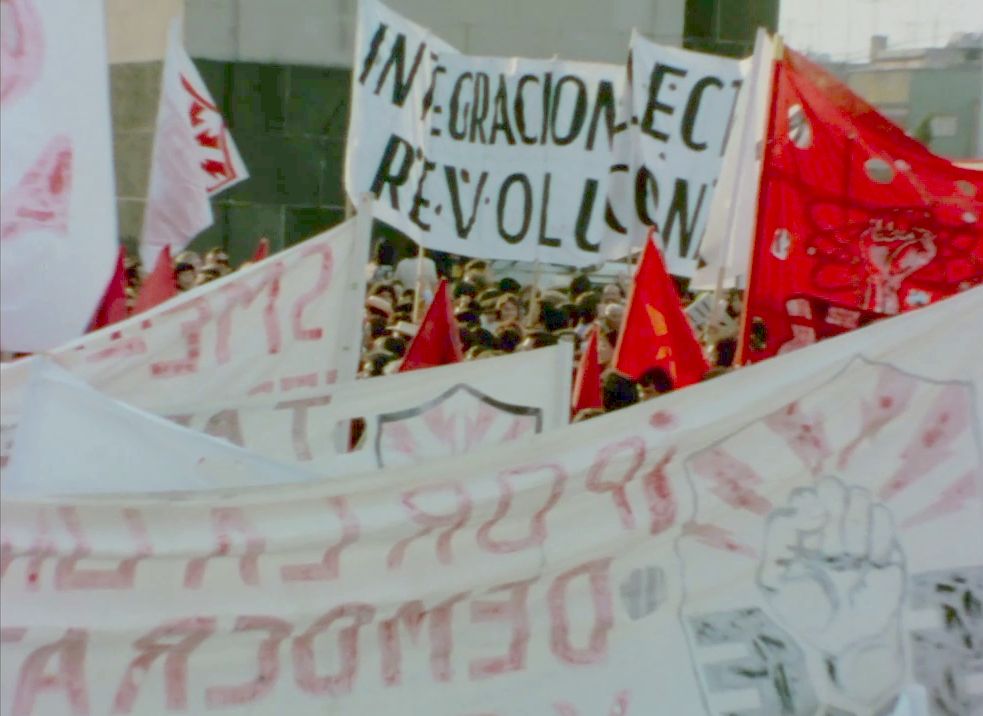Films You Cannot See Elsewhere
The Amos Vogel Atlas 17
Revolutionary Cinema from Mexico
March 20 and May 1, 2024
In September 2021, the Film Museum presented a chapter of the Vogel Atlas under the motto Viva Zapatista! on the occasion of the visit to Europe by representatives of the Zapatista Army of National Liberation (EZLN) from Mexico. Paul Leduc's rarely screened documentary Etnocidito: Notas sobre el mezquital (Genocide, 1977) was supposed to be included, but the film print we ordered did not arrive – and remains missing to this day. With the help of the Instituto Mexicano de Cinematografía, the Film Museum has managed to create a digital replacement and we can finally screen this extraordinary sociological essay film about the systematic annihilation of the indigenous population.
In the spirit of Amos Vogel, we will also show two medium-length Mexican masterpieces made a decade earlier and related to Etnocidio. Rubén Gámez's La fórmula secreta (The Secret Formula, 1966) is highlighted in Vogel's book Film as a Subversive Art (along with Leduc) in the chapter "Leftist and Revolutionary Cinema: The Third World": This surrealistic essay against servility was a turning point in Mexican cinema through its experimental power of invention. It will be combined with a major satirical work by Spanish-born filmmaker Luis Buñuel, who made many of his best films in Mexico and counted among Vogel's favorites. Simón del desierto (Simon of the Desert, 1965) is praised by Vogel in the chapter "The Attack on God:" Not only is it one of Buñuel's most pointed examinations of religion, but a perfect example of the casual form of surrealism that the filmmaker perfected. Except in his case, the descent into hell is cheerful. (Christoph Huber / Translation: Ted Fendt)
Amos Vogel (1921–2012), an Austrian-born Jew, became one of the most important figures in international film culture after his emigration to the United States. The Amos Vogel Atlas is a series dedicated continuing Vogel's oppositional legacy alongside the study of his literary estate, which is deposited in the Film Museum. Rarities from the collection represent key focal points.
In September 2021, the Film Museum presented a chapter of the Vogel Atlas under the motto Viva Zapatista! on the occasion of the visit to Europe by representatives of the Zapatista Army of National Liberation (EZLN) from Mexico. Paul Leduc's rarely screened documentary Etnocidito: Notas sobre el mezquital (Genocide, 1977) was supposed to be included, but the film print we ordered did not arrive – and remains missing to this day. With the help of the Instituto Mexicano de Cinematografía, the Film Museum has managed to create a digital replacement and we can finally screen this extraordinary sociological essay film about the systematic annihilation of the indigenous population.
In the spirit of Amos Vogel, we will also show two medium-length Mexican masterpieces made a decade earlier and related to Etnocidio. Rubén Gámez's La fórmula secreta (The Secret Formula, 1966) is highlighted in Vogel's book Film as a Subversive Art (along with Leduc) in the chapter "Leftist and Revolutionary Cinema: The Third World": This surrealistic essay against servility was a turning point in Mexican cinema through its experimental power of invention. It will be combined with a major satirical work by Spanish-born filmmaker Luis Buñuel, who made many of his best films in Mexico and counted among Vogel's favorites. Simón del desierto (Simon of the Desert, 1965) is praised by Vogel in the chapter "The Attack on God:" Not only is it one of Buñuel's most pointed examinations of religion, but a perfect example of the casual form of surrealism that the filmmaker perfected. Except in his case, the descent into hell is cheerful. (Christoph Huber / Translation: Ted Fendt)
Amos Vogel (1921–2012), an Austrian-born Jew, became one of the most important figures in international film culture after his emigration to the United States. The Amos Vogel Atlas is a series dedicated continuing Vogel's oppositional legacy alongside the study of his literary estate, which is deposited in the Film Museum. Rarities from the collection represent key focal points.
Related materials
Books Film as a Subversive Art


